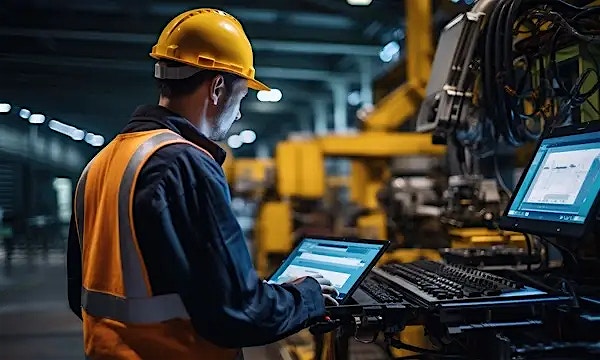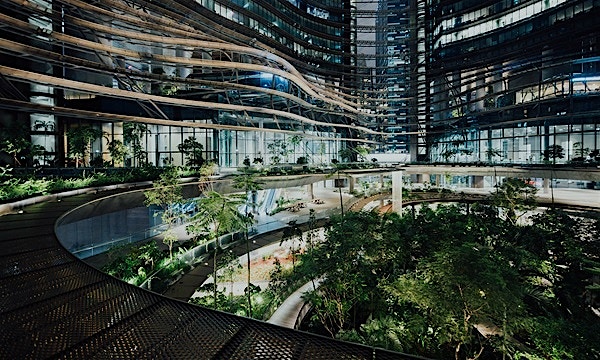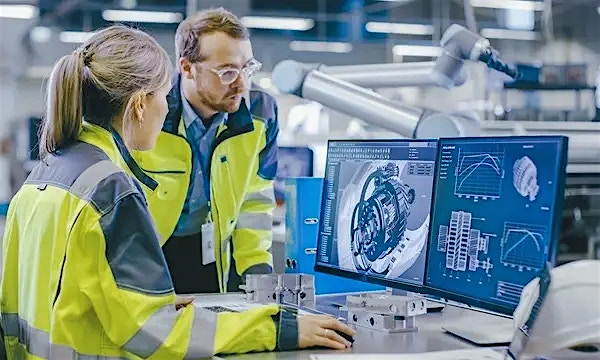At the forefront of this revolution is the concept of the industrial metaverse, poised to revolutionize factories and production processes in ways previously unimaginable. According to a McKinsey & Company report, the metaverse has the potential to create up to $5 trillion in value by 2030 through various consumer and business applications.
With the integration of artificial intelligence (AI), digital twins, augmented reality (AR), virtual reality (VR) and collaborative product design, the industrial metaverse offers a glimpse into the future of factories.
As organizations navigate through this digital transformation journey, they are transitioning from traditional business intelligence models to a more advanced cognitive ecosystem. This transformation is characterized by the integration of real-time insights and collaborative efforts with stakeholders at an unprecedented scale. Earlier this year, HCLTech launched HCLTech Metaverse solution, a digital innovation platform aimed at empowering enterprises to create engaging experiences in the metaverse and delight customers with immersive real-time experiences.
HCLTech Metaverse solution primarily focuses on delivering industrialized use cases for manufacturing, financial services, retail and consumer packaged goods, high-tech, telecom and life sciences and healthcare. The new metaverse solution uses HCLTech’s blockchain platform called COTRUST™ and Blockchain Tokenization Framework (OBOL) as the underlying decentralized capability to deliver end-to-end metaverse capabilities for enterprise needs.
This allows backend integrations ranging from blockchain, cloud, data to artificial intelligence. It helps to create a completely new virtual world, an intersection of different digital technology disciplines such as human interface, blockchain NFTs, 3D content creation, etc. under one umbrella platform.
What exactly is the industrial metaverse?
The industrial metaverse represents a virtual ecosystem that mirrors the real-world manufacturing environment, combining physical spaces with digital counterparts. This convergence enables manufacturers to optimize operations, enhance productivity and create seamless end-to-end value chains. McKinsey predicts that this integration could lead to a 20-50% reduction in product development timelines and a 10-30% reduction in operating costs across the manufacturing value chain.
Manufacturers are closely monitoring the emergence of technologies like avatars, digital twins, smart devices and wearables solutions to increase production-line efficiencies while simultaneously reducing cost and risks through predictive and prescriptive analytics. The increasing popularity of digital twin, robotics, augmented reality (AR), virtual reality (VR) and mixed reality (MR) holds immense potential for disrupting the manufacturing sector by bridging the gap between the physical and virtual worlds, connecting people and plants.
For instance, Boeing is placing a significant bet on digital technologies to build its next-generation airplane within the metaverse by unifying design, production and airline services operations. Given that 70% of its quality issues are attributed to design problems, simulating every conceivable scenario before moving to production is a logical step.
Digital twins: Bridging the physical-digital divide
Digital twins are virtual replicas of physical assets or processes, allowing for real-time monitoring, analysis and optimization. According to the Statista, the global market for digital twins in the manufacturing industry alone is expected to reach more than $6 billion by 2025. That’s more than a tenfold increase from 2020.
Digital twins play a crucial role in bridging the physical-digital divide. NASA, for example, has relied on digital twins to manage complex systems and simulate operations successfully. The ability to virtually identify and manage variables has proven to be a reliable manufacturing strategy for optimizing performance while mitigating risk and cost associated with new product introductions.
HCLTech recently employed a digital twin approach to provide a comprehensive solution for a renowned gas distribution company. By leveraging machine learning to identify faults in the pipeline network, HCLTech utilized a geospatial dashboard based on application integration to review recommendations and create work orders. This digital approach streamlined the entire replacement process, ensuring efficiency and effectiveness.
One of the appealing aspects of the industrial metaverse is the ability to create avatars that can represent our digital selves. The concept of building cyber-physical bridges has long been sought in manufacturing, as it is more cost-effective to industrialize a complex product virtually before physically constructing it. In the metaverse, avatars and digital twins are expected to coexist and play a significant role.
However, the industrial metaverse is not devoid of challenges. Integrating digital twins demands significant investments in IoT sensors, data analytics and cybersecurity. The delicate balance between the virtual and the physical must be maintained to avoid costly errors.
AI, robotics, IoT and the smart factory revolution
Artificial intelligence, robotics and IoT form the backbone of the industrial metaverse and a smart manufacturing approach, driving automation, analytics and decision-making. By leveraging real-time data analytics and predictive maintenance, smart manufacturing optimizes efficiency, productivity and safety in manufacturing processes.
As per McKinsey, AI could generate between $1.3 to $2 trillion in annual economic value in the manufacturing sector. From predictive maintenance, data analysis and quality control to demand forecasting and supply chain optimization, the potential of AI, robotics and IoT is vast. The use of robotics in manufacturing has revolutionized the way factories operate, with one of the most significant benefits being cost reduction.
According to a recent blog on the rise of smart manufacturing and impact of robotics, Shailesh Kumar Arya, ME & Global Consultant - Manufacturing Ecosystem at HCLTech mentioned: “Precision has always been a priority to eliminate variation and ensure consistent quality. With the help of cutting-edge cognitive robots, achieving the highest level of precision has become easier than ever before. Digital twin and thread technology can also eliminate inconsistencies in quality, making manufacturing processes more efficient and effective.”
HCLTech’s Industry NeXT takes this a step further by providing an integrated capability of quality systems that combines robots with vision cameras, real-time universal insight solutions and AI-ML platforms. These platforms seamlessly integrate with various robots, equipment and people to aggregate data, apply analytics algorithms and provide real-time predictive quality and asset performance insights.
Yet, the reliance on emerging technologies comes with its own set of pitfalls. Ethical considerations, bias in algorithms and the challenge of reskilling the workforce for the AI-driven era are issues that demand careful navigation.
Navigating challenges and seizing opportunities
As the industrial metaverse unfolds, the need for robust cybersecurity measures becomes paramount. A breach in the virtual realm could have catastrophic consequences in the physical world. The 2022 Metaverse Survey stated that cybersecurity and privacy were the top concerns holding executives back from the adoption of Metaverse. Metaverse scams, cyberattacks, phishing risks, security breaches and privacy violations are risks threatening this three-dimensional digital world.
Additionally, reskilling the workforce is imperative to harness the full potential of this transformation. The industrial metaverse is poised to redefine the future of factories and manufacturing processes. It offers a glimpse into a world of unparalleled efficiency, innovation and collaboration. However, a cautious approach is required to tackle the challenges and uncertainties that come with such a paradigm shift.





